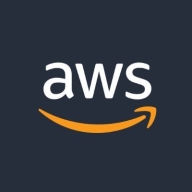

Azure Monitor and AWS X-Ray compete in the cloud monitoring and application performance sector. Azure Monitor seems to have the upper hand due to better user satisfaction in pricing and support, while AWS X-Ray is favored for its advanced features.
Features: Azure Monitor has comprehensive data analysis, seamless integration with Microsoft services, and robust alerting capabilities. AWS X-Ray offers detailed tracing capabilities, efficient performance issue pinpointing, and robust API integration.
Room for Improvement: Azure Monitor needs enhancements in alerting features, multi-cloud support, and interface usability. AWS X-Ray requires improvements in user documentation, setup processes, and user interface updates.
Ease of Deployment and Customer Service: Azure Monitor is praised for straightforward deployment, though with a learning curve, and high-rated customer service. AWS X-Ray has robust deployment but tricky initial setup and responsive customer service.
Pricing and ROI: Azure Monitor users are generally satisfied with the pricing structure and report good ROI. AWS X-Ray users find the pricing fair for its features, but some mention higher costs. Azure Monitor is perceived to offer better ROI.
| Product | Market Share (%) |
|---|---|
| Azure Monitor | 4.3% |
| AWS X-Ray | 2.5% |
| Other | 93.2% |


| Company Size | Count |
|---|---|
| Small Business | 8 |
| Large Enterprise | 3 |
| Company Size | Count |
|---|---|
| Small Business | 23 |
| Midsize Enterprise | 6 |
| Large Enterprise | 29 |
AWS X-Ray is a powerful debugging and performance analysis tool offered by Amazon Web Services. It allows developers to trace requests made to their applications and identify bottlenecks and issues.
With X-Ray, developers can visualize the entire request flow and pinpoint the exact location where errors occur. It provides detailed insights into the performance of individual components and helps optimize the overall application performance.
X-Ray integrates seamlessly with other AWS services, making it easy to trace requests across different services and identify dependencies. It also offers a comprehensive set of APIs and SDKs, enabling developers to instrument their applications and capture valuable data for analysis. With its user-friendly interface and powerful features, AWS X-Ray is a valuable tool for developers looking to improve the performance and reliability of their applications.
Azure Monitor is a comprehensive monitoring solution offered by Microsoft Azure. It provides a centralized platform for monitoring the performance and health of various Azure resources, applications, and infrastructure.
With Azure Monitor, users can gain insights into the availability, performance, and usage of their applications and infrastructure. The key features of Azure Monitor include metrics, logs, alerts, and dashboards. Metrics allow users to collect and analyze performance data from various Azure resources, such as virtual machines, databases, and storage accounts.
Logs enable users to collect and analyze log data from different sources, including Azure resources, applications, and operating systems. Azure Monitor also provides a robust alerting mechanism that allows users to set up alerts based on specific conditions or thresholds. These alerts can be configured to notify users via email, SMS, or other notification channels. Additionally, Azure Monitor offers customizable dashboards that allow users to visualize and analyze their monitoring data in a personalized and intuitive manner.
Azure Monitor integrates seamlessly with other Azure services, such as Azure Automation and Azure Logic Apps, enabling users to automate actions based on monitoring data. It also supports integration with third-party monitoring tools and services, providing flexibility and extensibility.
Overall, Azure Monitor is a powerful and versatile monitoring solution that helps users gain deep insights into the performance and health of their Azure resources and applications. It offers a wide range of features and integrations, making it a comprehensive solution for monitoring and managing Azure environments.
We monitor all Application Performance Monitoring (APM) and Observability reviews to prevent fraudulent reviews and keep review quality high. We do not post reviews by company employees or direct competitors. We validate each review for authenticity via cross-reference with LinkedIn, and personal follow-up with the reviewer when necessary.